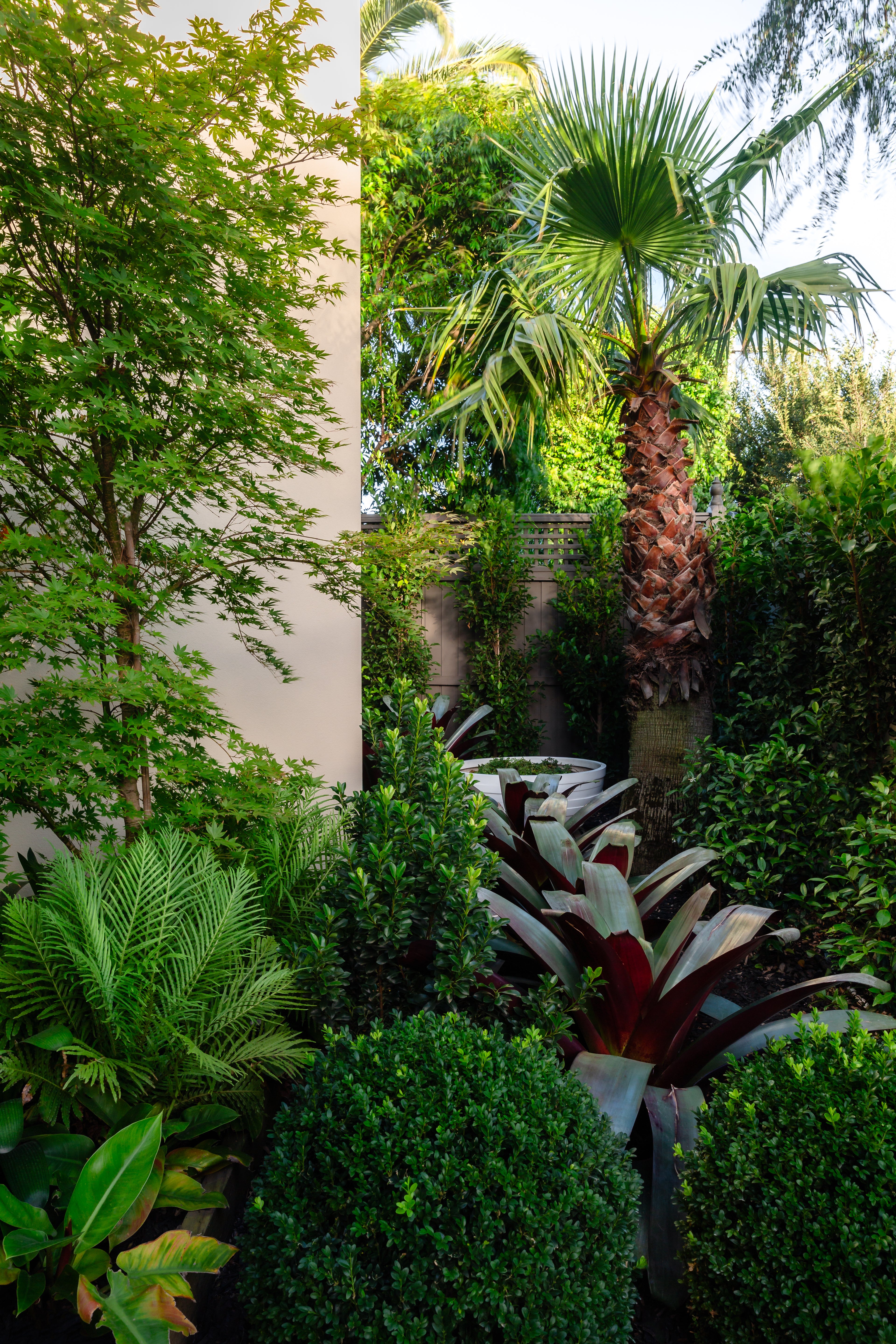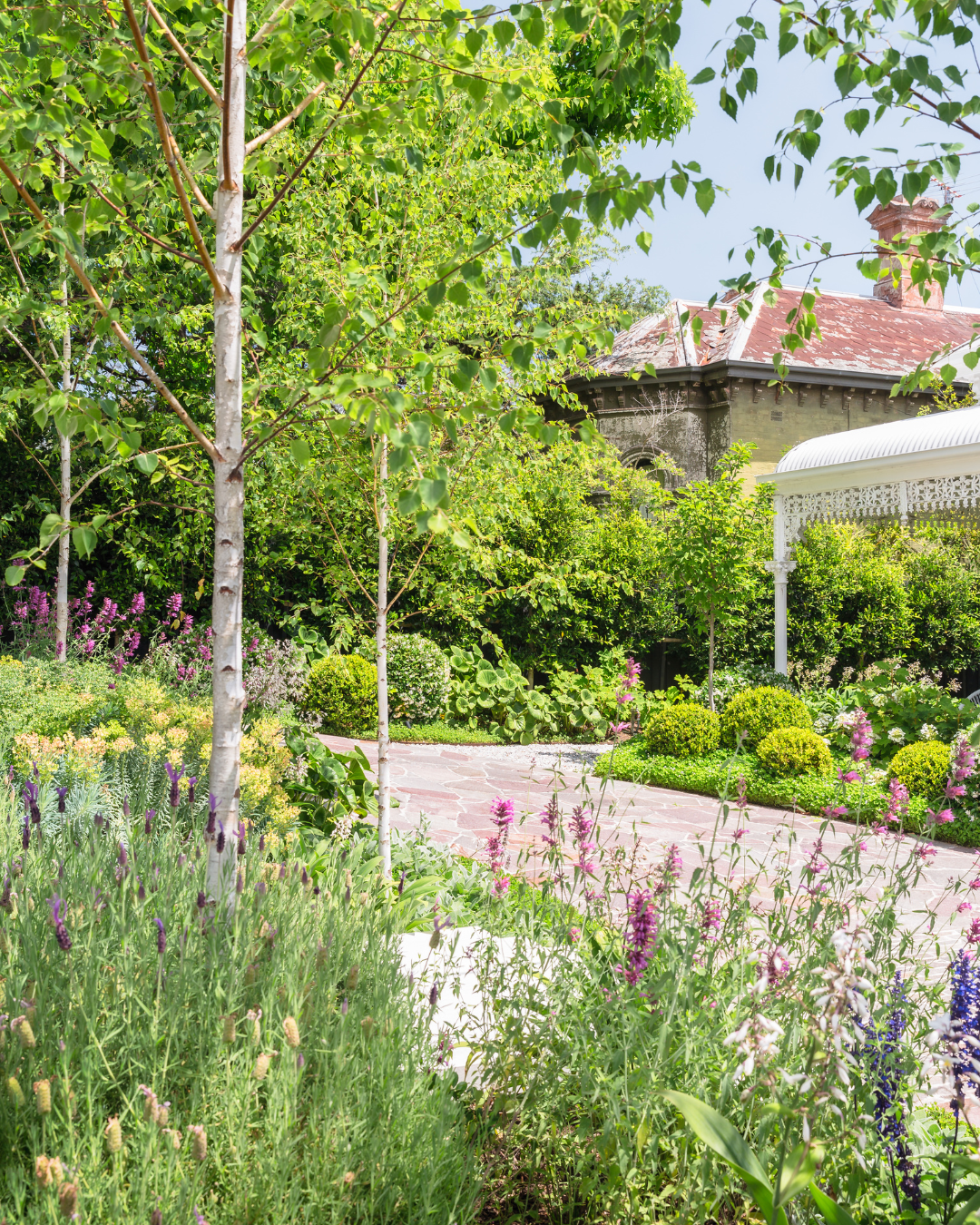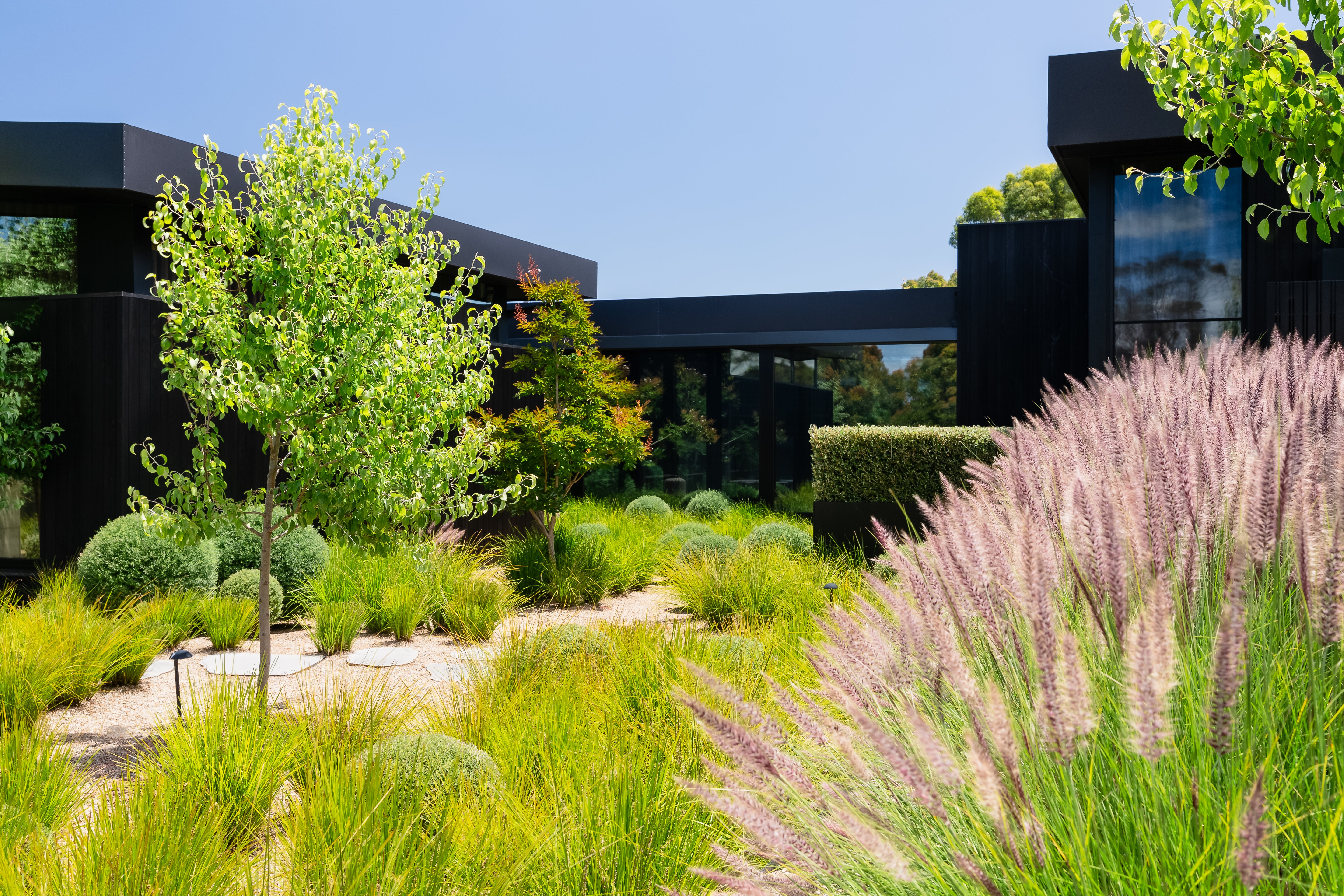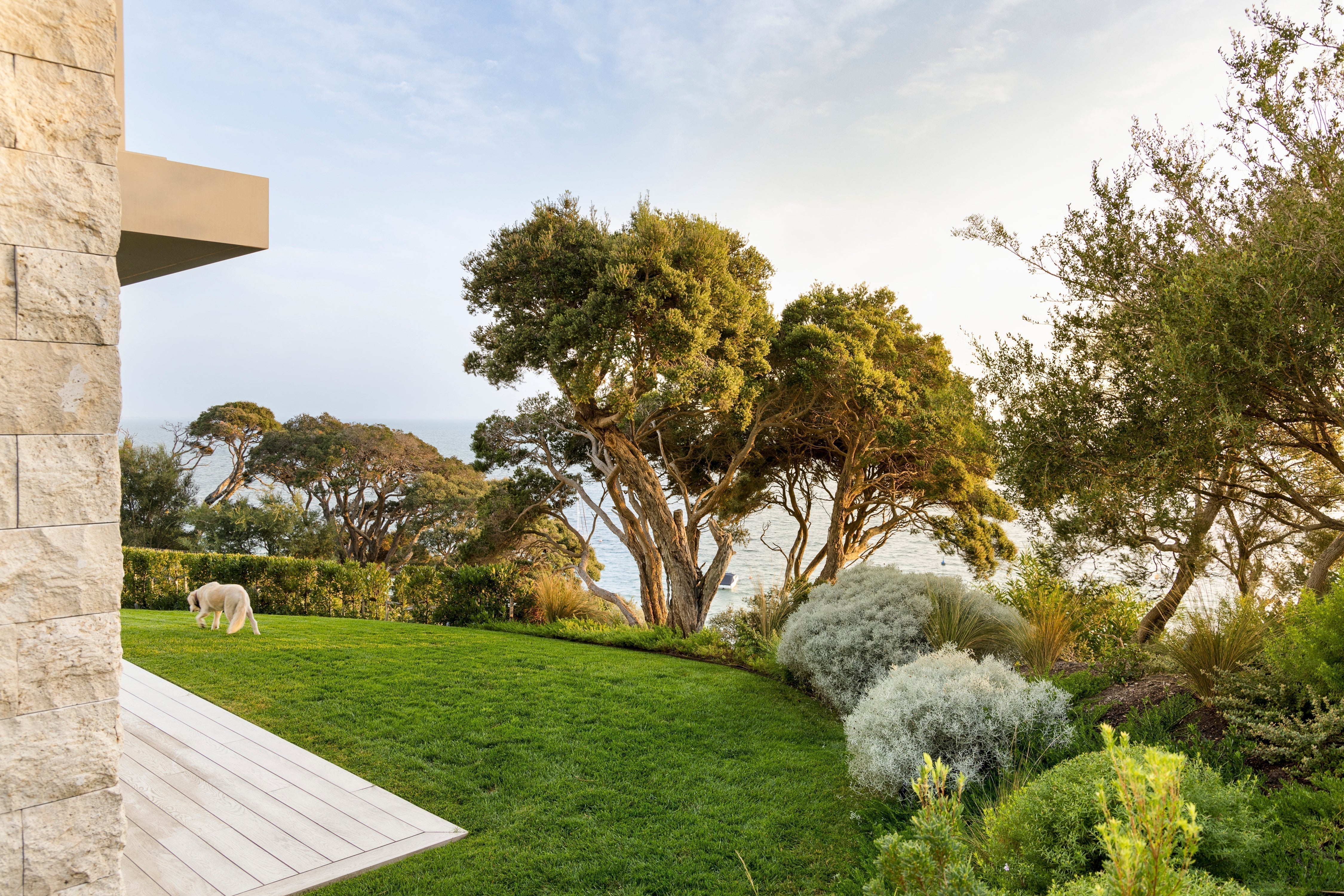
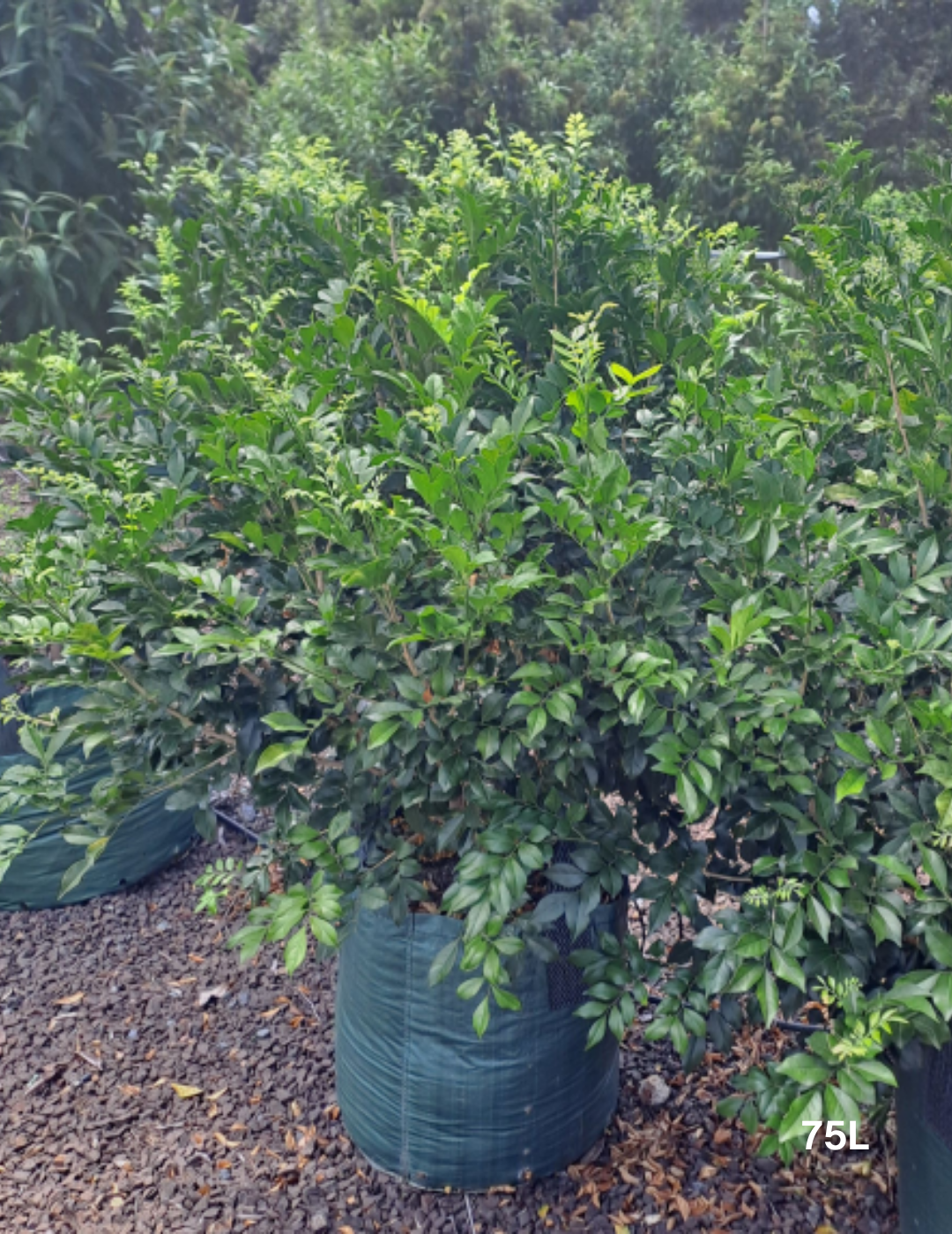
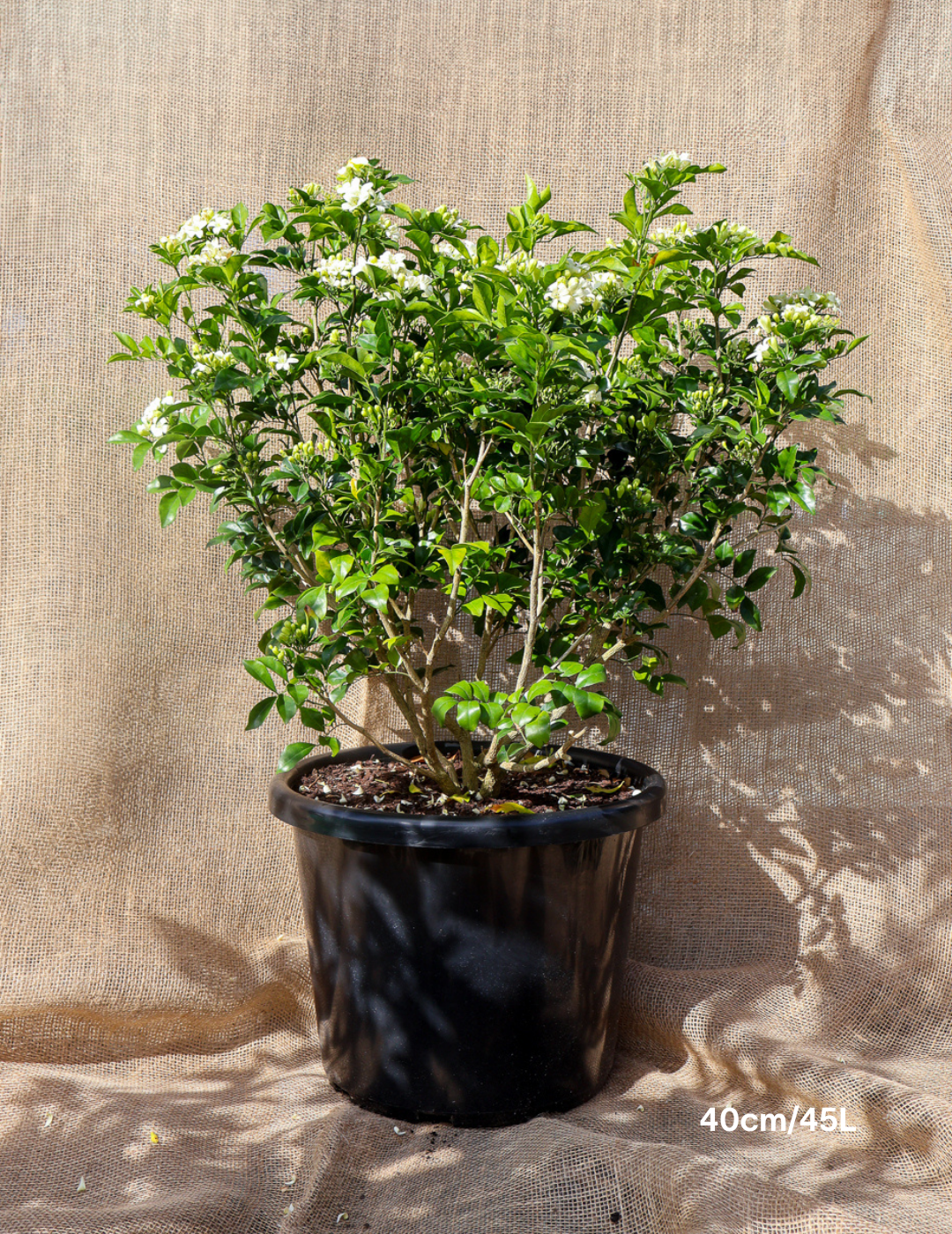
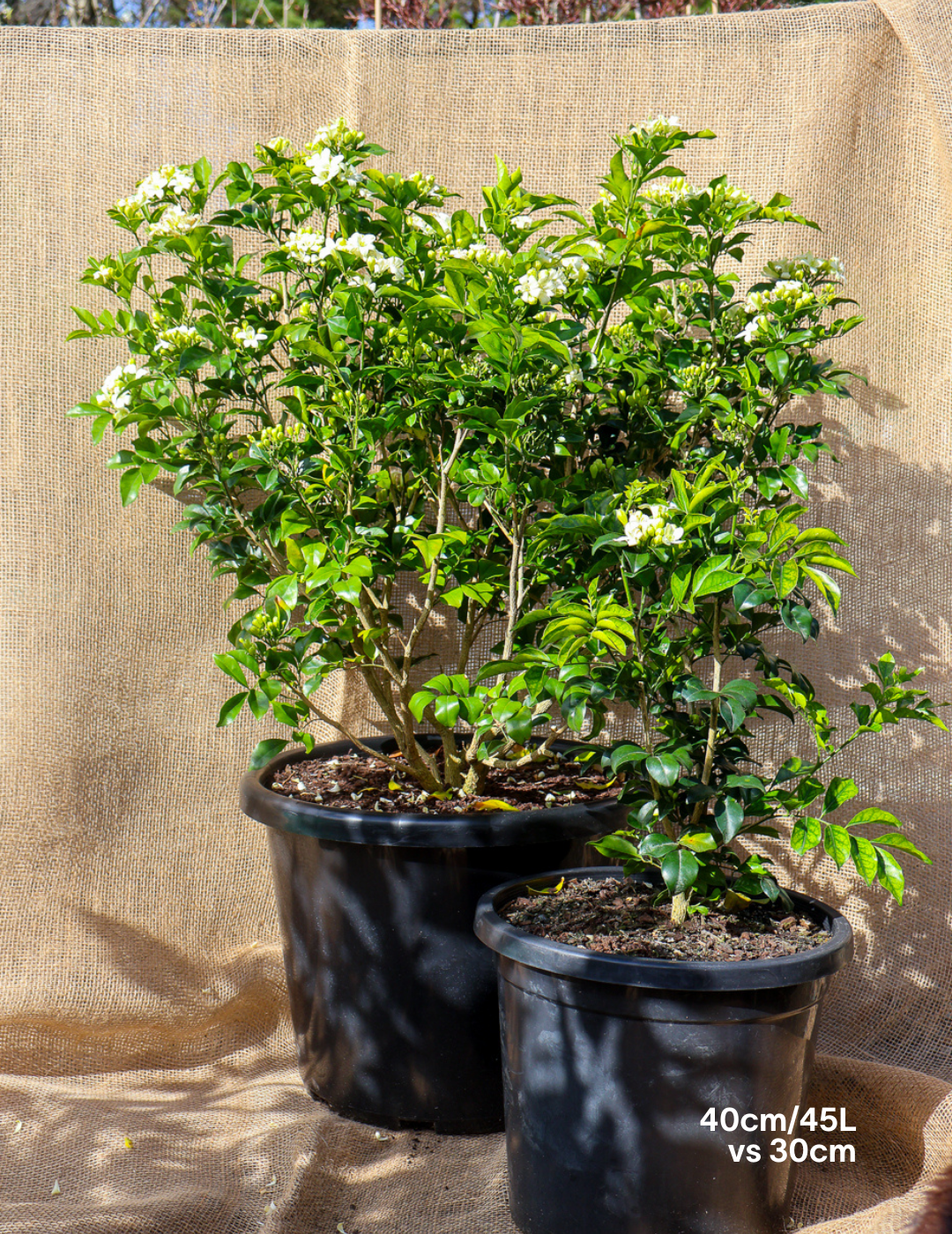
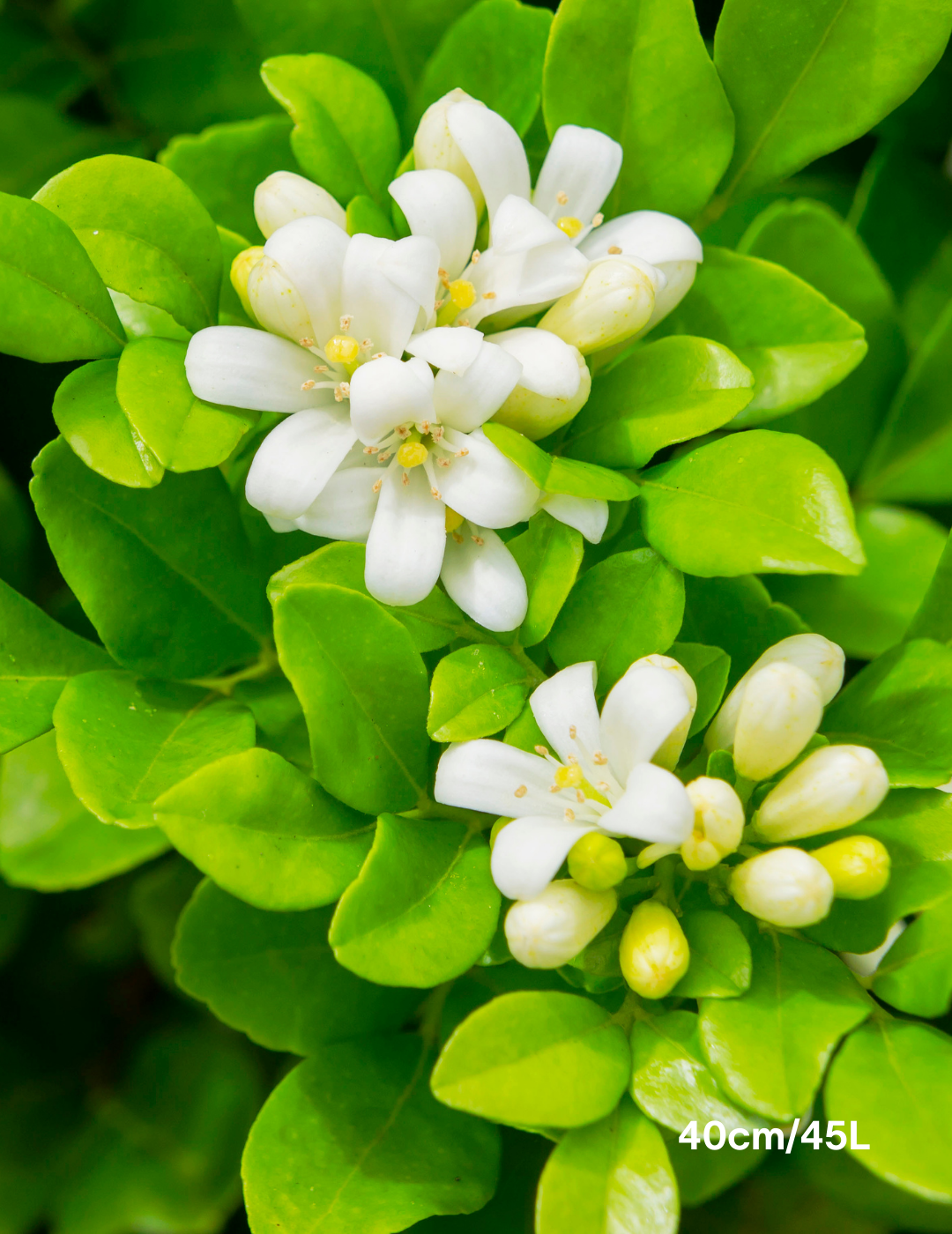
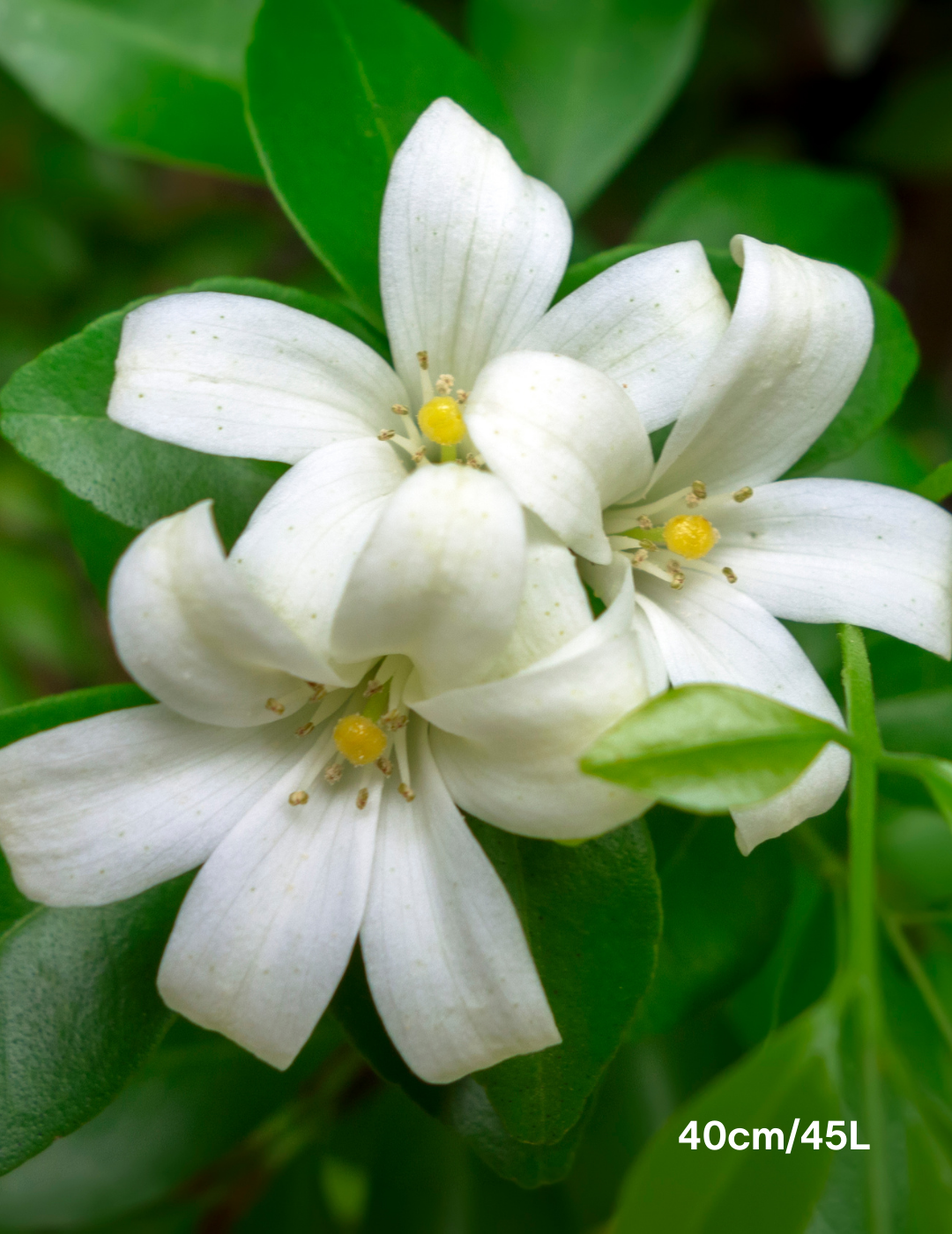
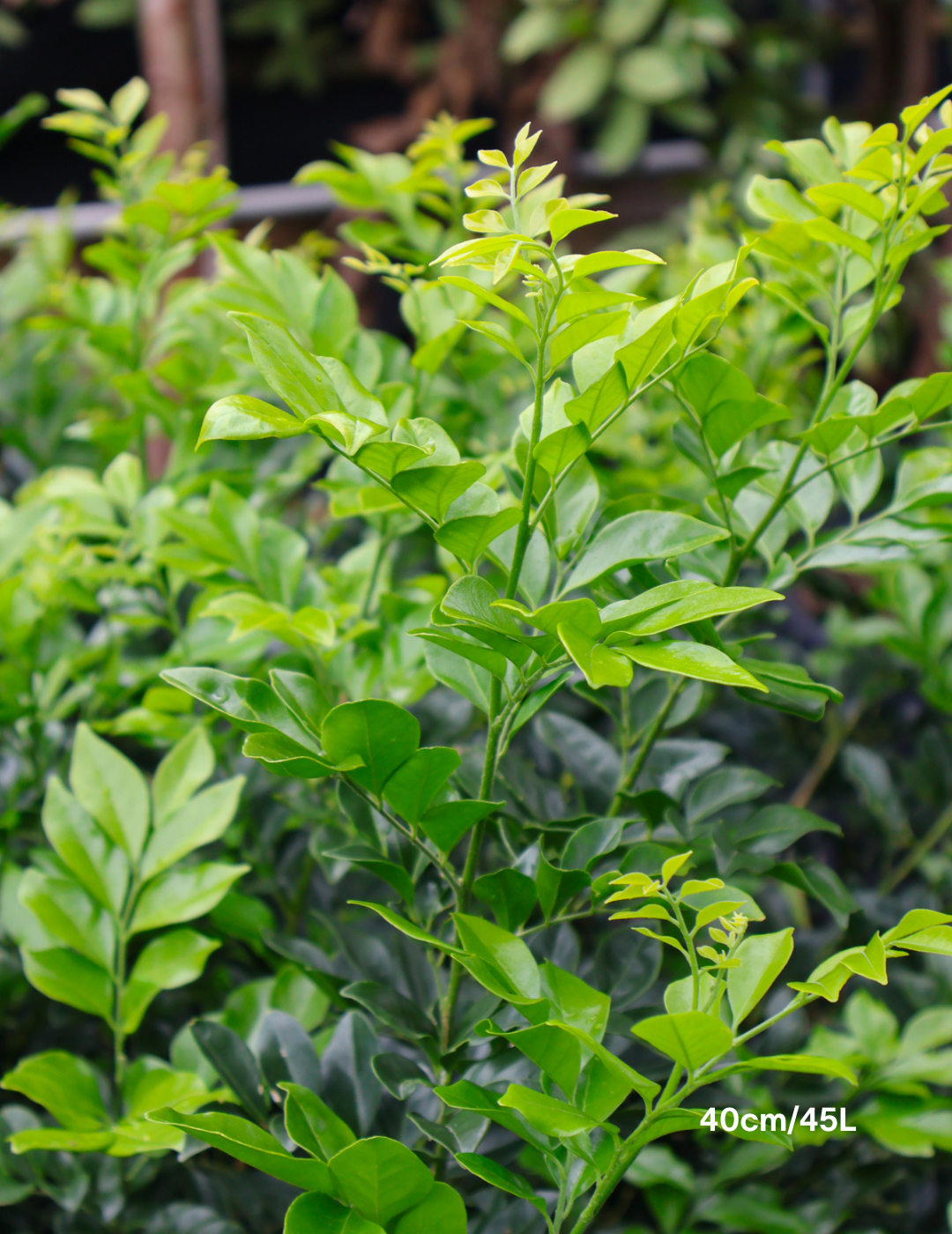
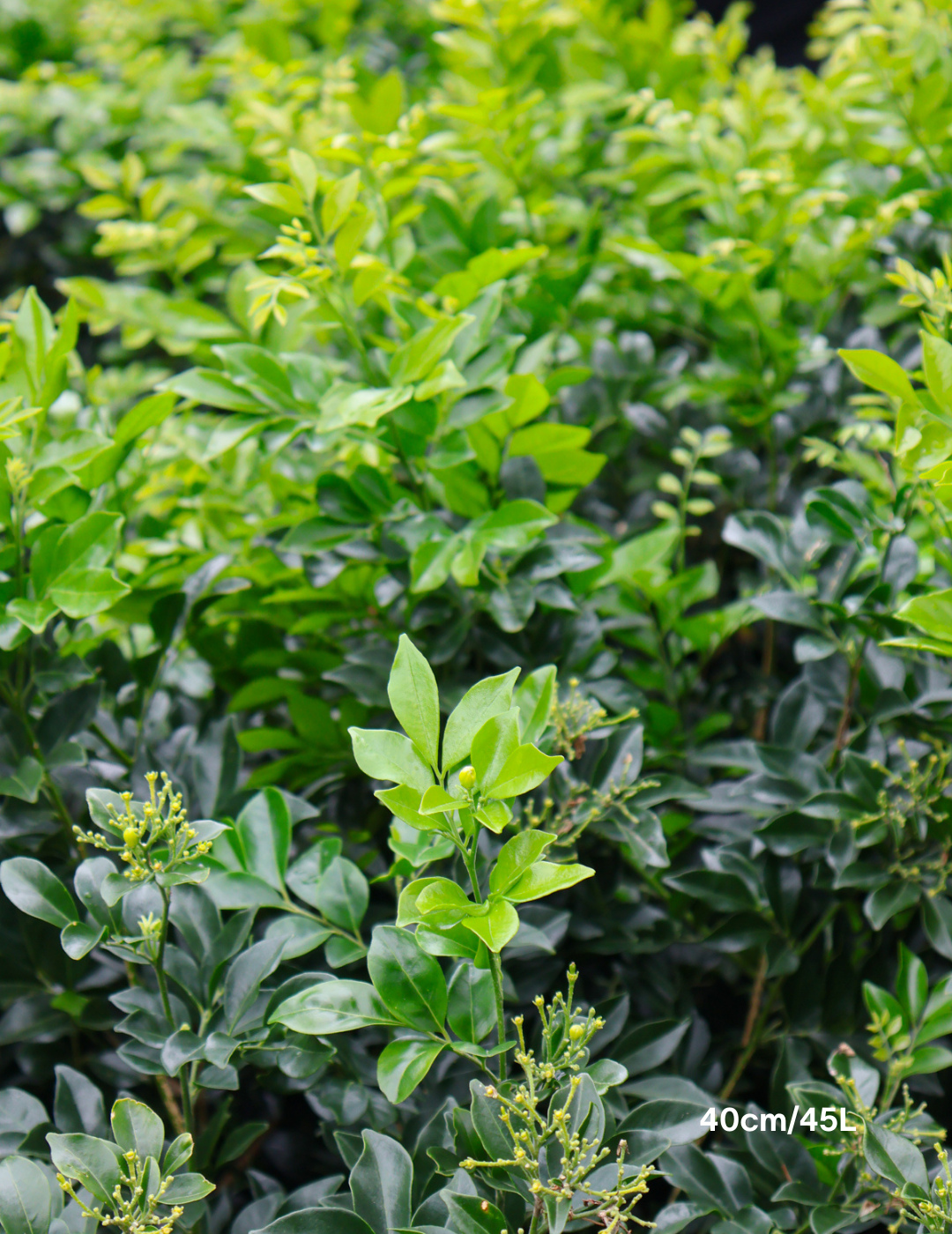
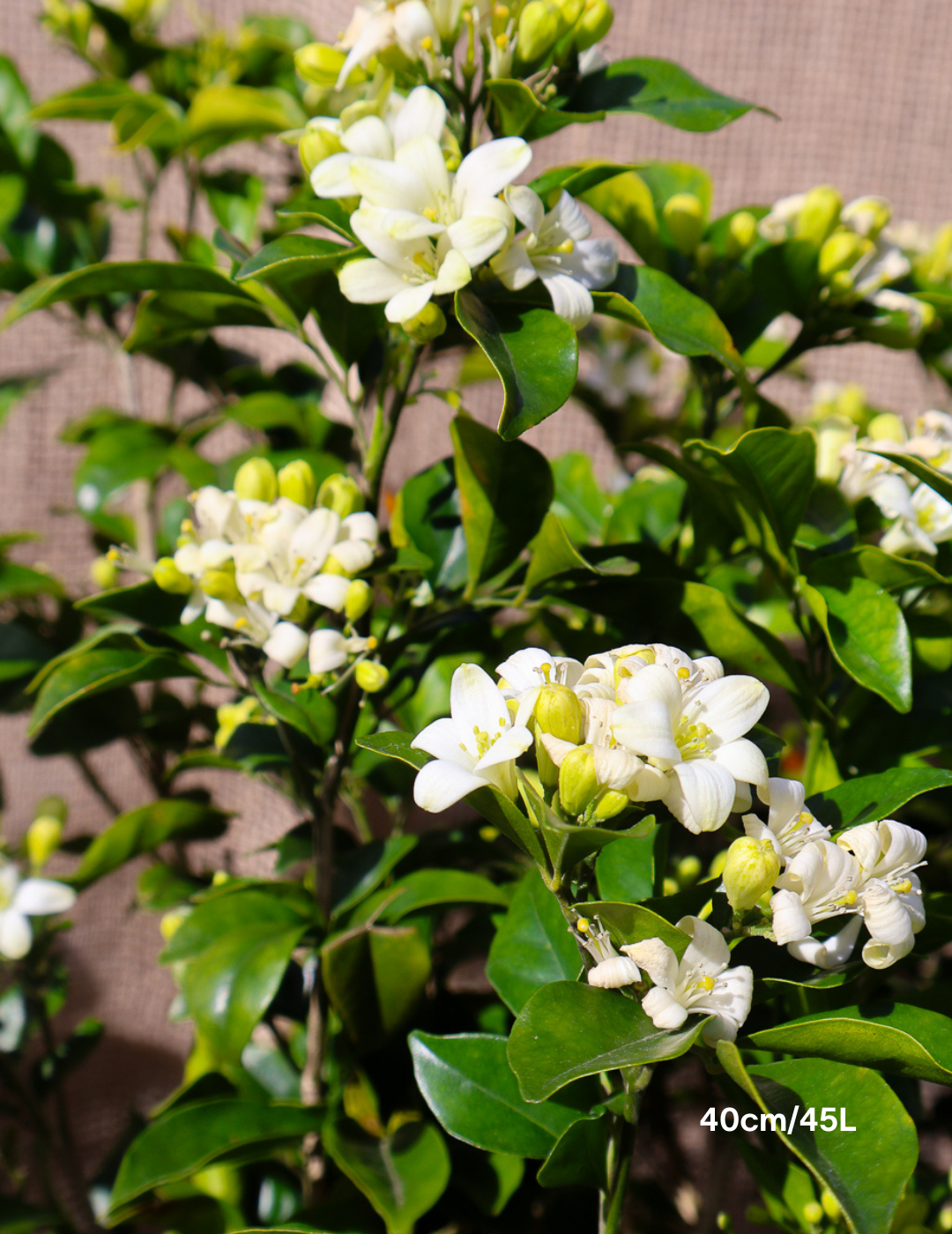
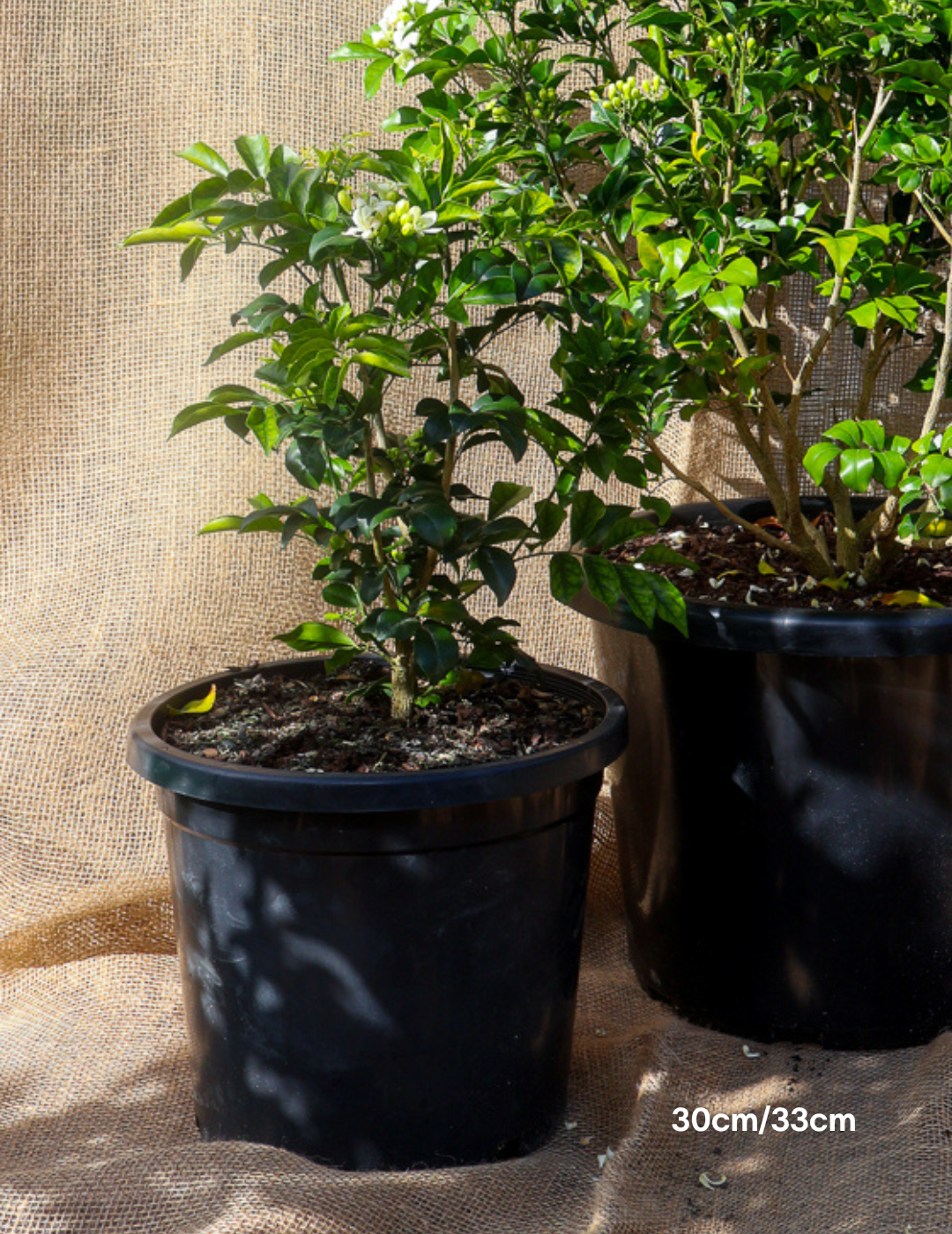
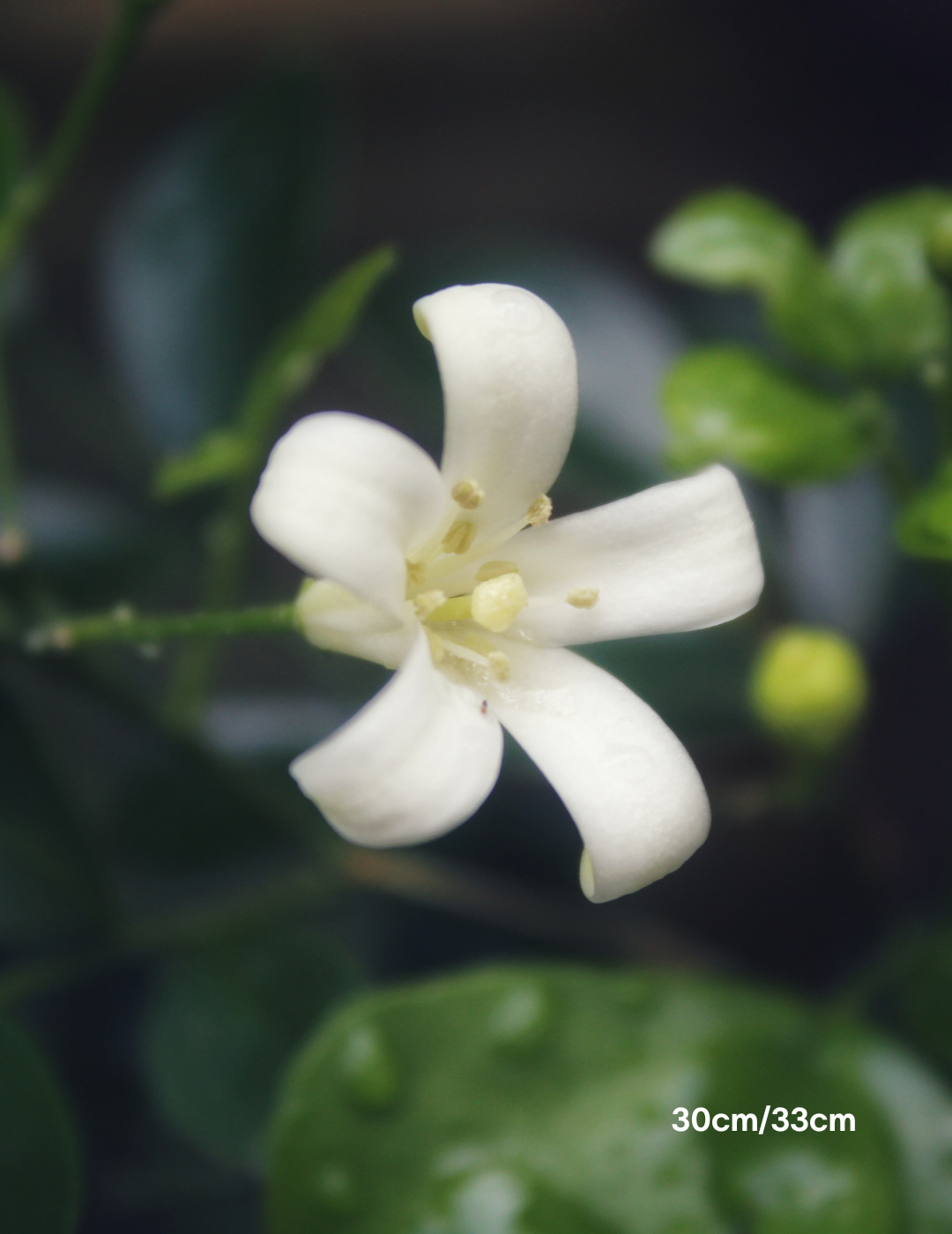
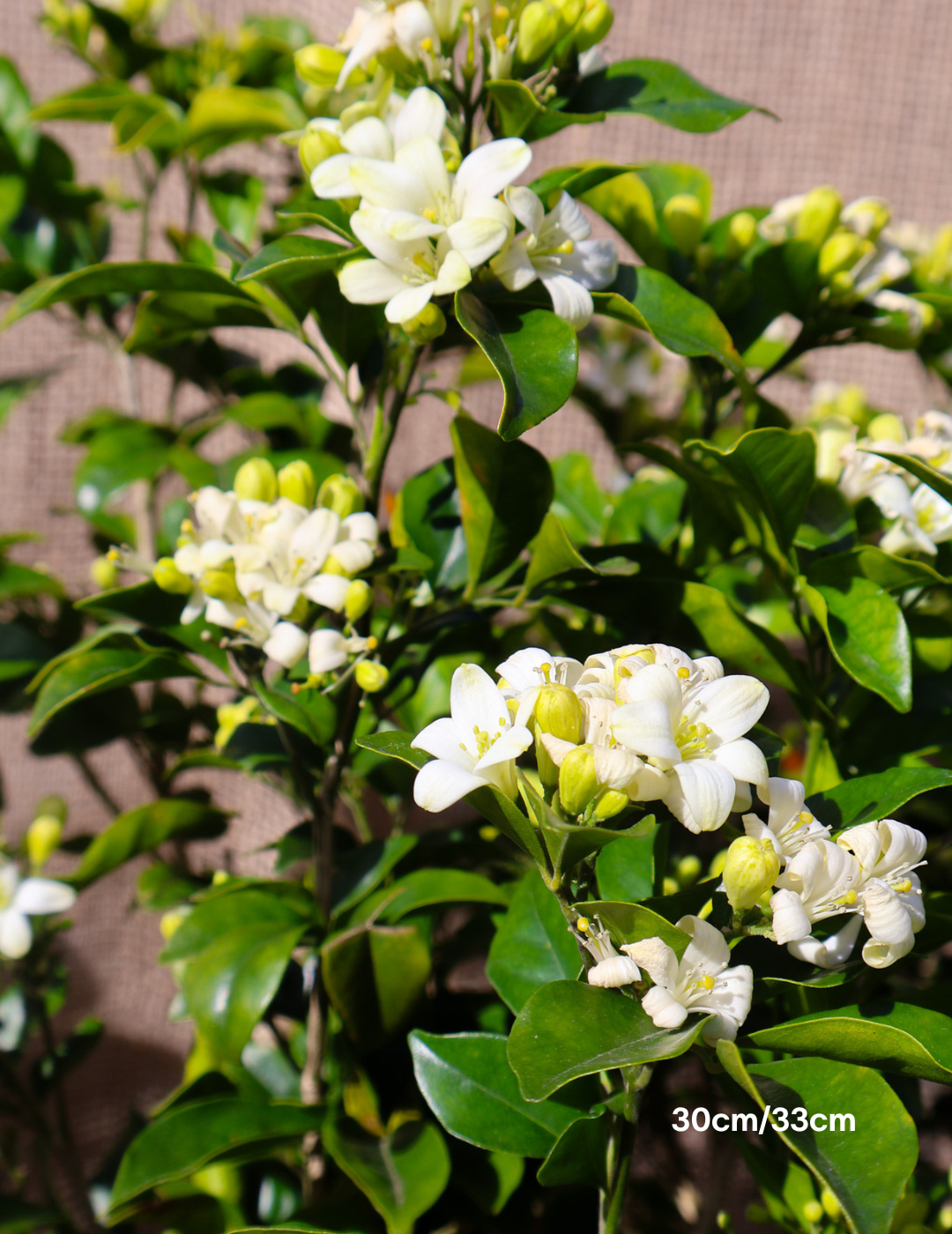

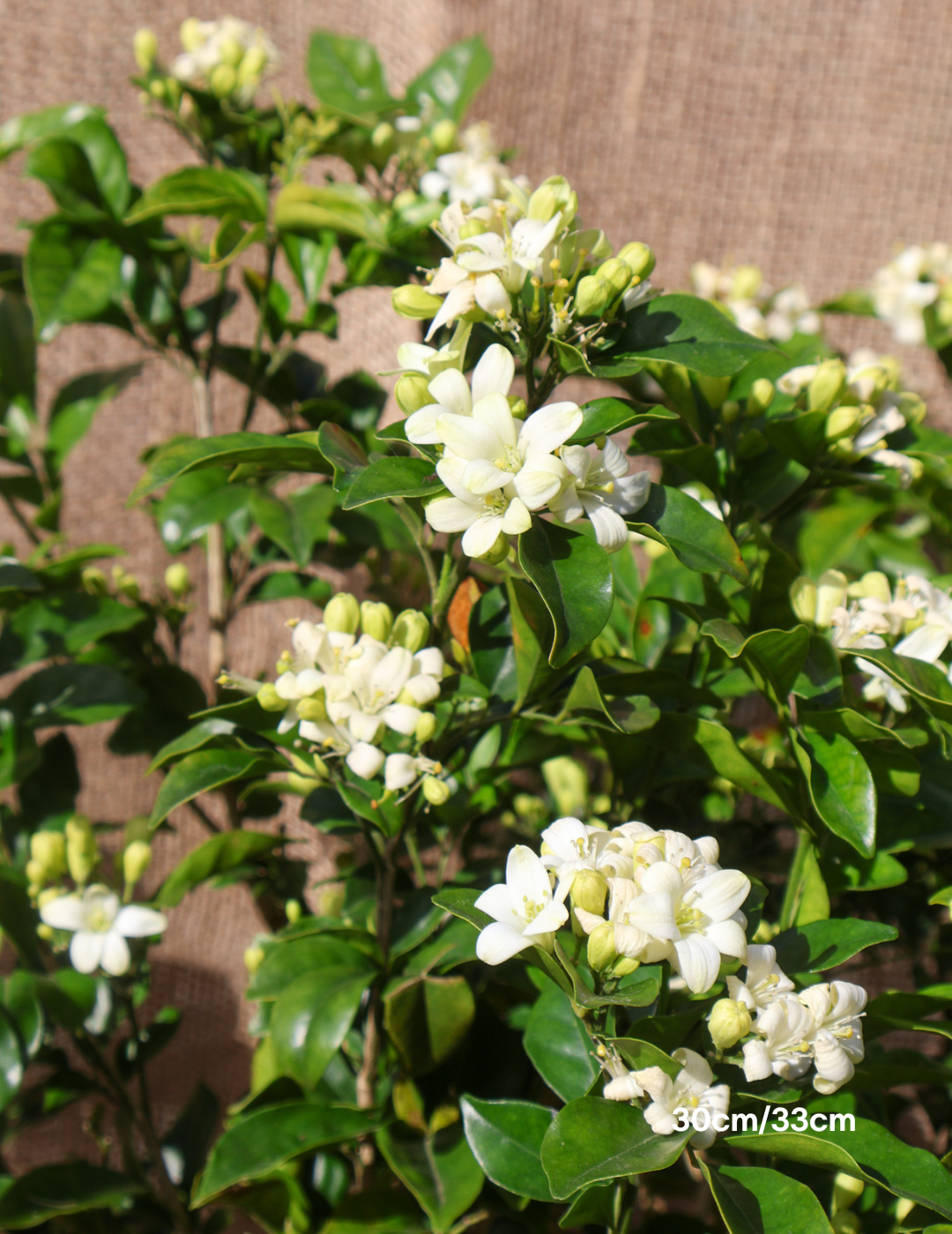
Murraya paniculata
- Regular price
- $450.00
- Sale price
- $450.00
- Regular price
-
Learn About Your New Murraya paniculata
Murraya paniculata is a popular evergreen shrub that produces clusters of fragrant white flowers and small, glossy leaves. It is commonly used as a hedge or screen plant, and its citrus-scented flowers and leaves make it a popular choice for gardeners who want to add an exotic touch to their landscapes.
Mature Height (meters): 2-4m
Mature Width (meters): 1.5-3m
Spacing: 1-2m
Foliage: Glossy, dark green
Flowering period: Spring to summer
Form/Habit: Compact, dense
Uses: Feature shrub, hedging, fragrant garden
Evergreen/Deciduous: Evergreen
Tolerates: Full sun, part shade
Drought Hardy: Yes
Maintenance: Low
Water requirement: Moderate
Murraya paniculata showcases glossy, dark green foliage that adds an attractive element to any garden or landscape. From spring to summer, it produces clusters of highly fragrant white flowers, filling the air with a delightful citrus-like scent. These flowers are followed by small, red, berry-like fruits that add ornamental interest. The compact and dense form of Murraya paniculata allows it to be used as a standalone feature shrub, creating a focal point in the garden. Additionally, it can be trimmed into a formal or informal hedge, providing privacy and a fragrant barrier.
Being an evergreen shrub, Murraya paniculata maintains its lush foliage year-round, making it an ideal choice for creating green screens and hedging. It tolerates full sun to part shade conditions, adapting well to a range of soil types. Once established, it demonstrates good drought tolerance, requiring moderate watering during dry periods.
How to Maintain Murraya paniculata
-
Watering: While Murraya paniculata is drought-tolerant once established, it benefits from regular watering during dry periods, especially in the first year after planting. Water deeply and allow the soil to dry slightly between waterings.
-
Pruning: Prune as needed to maintain the desired shape and size of the shrub. Light pruning can be done throughout the year, but major pruning should be done after the flowering period to encourage denser growth.
-
Fertilization: Apply a balanced slow-release fertilizer in spring to promote healthy growth. Follow the manufacturer's instructions regarding dosage and application method.
-
Pests and diseases: Murraya paniculata is generally resilient to pests and diseases. However, regular monitoring is recommended to address any potential issues promptly.
-
Mulching: Renew the mulch layer annually to help conserve soil moisture, suppress weed growth, and improve soil fertility.
-
Regular inspections: Regularly inspect the shrub for any signs of stress, disease, or pest infestations. Address any issues promptly to maintain the health and vitality of your Murraya paniculata shrub.
Caring for Your Murraya paniculata Shrub
-
Provide regular water during the establishment phase and during dry periods.
-
Prune as needed to maintain shape and size, focusing on post-flowering pruning for optimal growth.
-
Apply a balanced slow-release fertilizer in spring according to the manufacturer's instructions.
-
Monitor for any signs of pests or diseases and take appropriate action if necessary.
-
Renew the mulch layer annually to conserve moisture and suppress weeds.
-
Regularly inspect the shrub for any signs of stress or issues and address them promptly to ensure the health and vitality of your Murraya paniculata shrub.
Frequently Asked Questions
-
Is Murraya paniculata toxic to pets? Yes, the plant is toxic to cats and dogs.
-
How fast does Murraya paniculata grow? It grows at a moderate pace, about 30-60 cm per year.
-
Can Murraya paniculata be grown in containers? Yes, it can be grown in containers, but it will need to be pruned regularly to maintain its shape.
Everything You Need to Know Before Planting Murraya paniculata
Planting Tips for Murraya paniculata
Root Ball Dimensions (Width × Depth) & Planting Guide for Murraya paniculata
Use this as a reference when digging your planting hole. We recommend digging at least 10% wider than the dimensions below to encourage strong root development.
- 30cm Pot: 33cm (W) × 30cm (D)
- 40cm/45L Pot: 44cm (W) × 41.5cm (D)
- 50cm Pot: 49.5cm (W) × 35.2cm (D)
- 70L Pot: 55cm (W) × 41.8cm (D)
- 100L Bag: 50.6cm (W) × 52.8cm (D)
- 100L Pot: 66cm (W) × 49.5cm (D)
- 150L Bag: 66cm (W) × 55cm (D)
- 200L Bag: 71.5cm (W) × 60.5cm (D)
- 300L Bag: 88cm (W) × 63.8cm (D)
- 400L Bag: 99cm (W) × 66cm (D)
- 500L Bag: 122cm (W) × 66cm (D)
- 750L Bag: 134cm (W) × 69cm (D)
- 1000L Bag: 146.3cm (W) × 71.5cm (D)
- 2000L Bag: 176cm (W) × 82.5cm (D)
Growing Murraya paniculata in Various Soil Types
Watering Requirements After Planting Your Murraya paniculata
When planting a new tree or shrub, proper watering is essential to ensure healthy establishment and long-term growth. Follow these guidelines to give your plant the best start:
- Immediately After Planting:
Water generously right after planting to settle the soil around the roots and eliminate air pockets. This helps the roots make good contact with the soil. - First Three Months (Establishment Phase):
The initial three months are critical for root development. Water deeply twice daily (morning and evening) to encourage strong, deep root growth. - Irrigation Systems:
If using an irrigation system, adjust it to provide adequate water during the establishment phase. Ensure the water reaches the root zone without overwatering. - Weather Considerations:
Adjust watering based on weather conditions. Increase frequency during hot, dry periods and reduce it during cooler, wetter seasons. - Ongoing Care:
After the establishment phase, gradually reduce watering frequency but ensure the plant receives consistent moisture, especially during dry spells.
By providing consistent and appropriate watering during the initial months, you’ll help your new tree or shrub establish a strong root system and thrive in your garden.
Frequently Asked Questions About Murraya paniculata
Growing Your Murraya paniculata in Various Soil Types
Need Assistance For Your Next Project?Let Us Help.
Evergreen Trees Direct is Australia's unrivaled supplier of the highest quality advanced tree stock. Our extensive supplier network allows us to provide a one-stop shop for all your landscaping needs, no matter how big or small the project. We pride ourselves on exceptional service, ensuring a seamless experience from selection to delivery. Trust us to bring your landscaping vision to life with the perfect trees for any outdoor space. With our unrivaled selection and commitment to service, Evergreen Trees Direct is the top choice for landscapers, property developers, and garden enthusiasts alike.
-
 A layered, resilient coastal garden designed to withstand harsh salt winds and seasonal extremes. This Mornington Peninsula property features a cur...
A layered, resilient coastal garden designed to withstand harsh salt winds and seasonal extremes. This Mornington Peninsula property features a cur... -
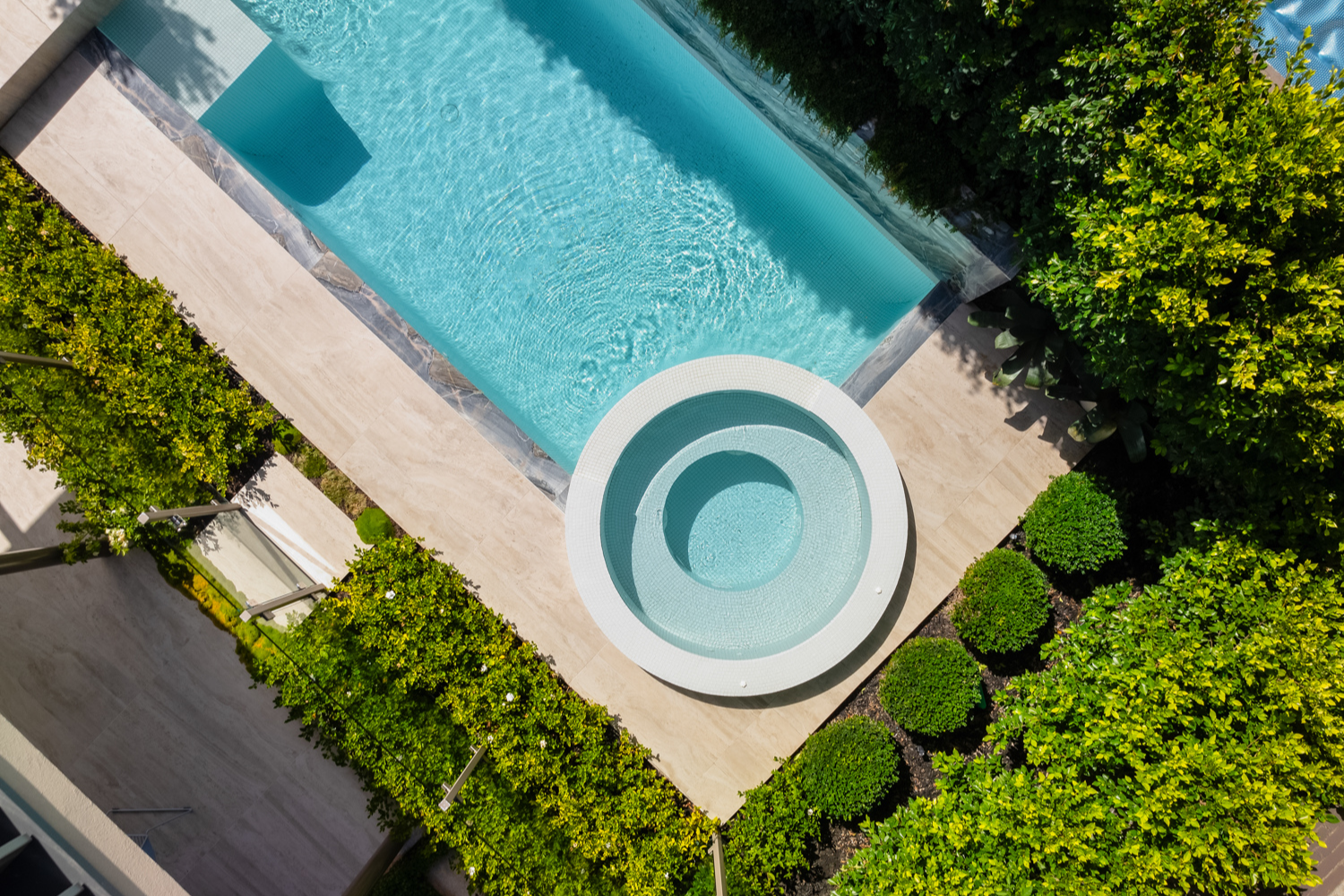
Brighton Project
Presenting our recent project in Brighton, Victoria, landscaped by Jack Merlo Landscape & Design. This modern landscape features a variety of h... -
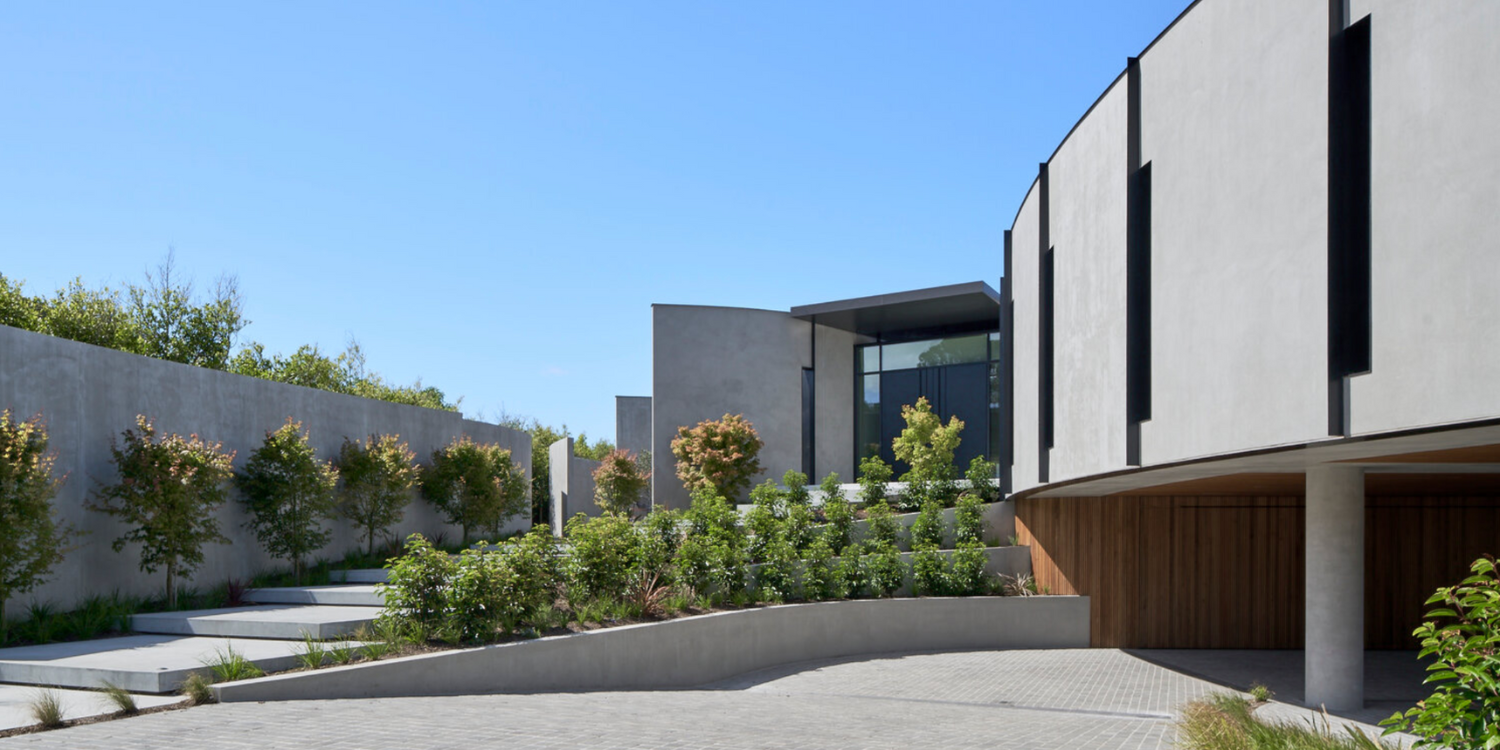
Horizon House, Flinders
Horizon House in Flinders blends nature with bold architectural design, using natural elements to enhance its modern aesthetic.Acer Palmatum (Japan...
